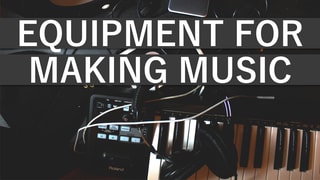Updated: Aug 02, 2019
Share!
Charging More for Audio as a Freelancer

Charging more for audio as a freelancer. An intimidating move at first, but one that may spark your interest. As a freelance Composer, Sound Designer, or any contractor really, you can be charging more for the work you do.
These are some of the most important things to consider when taking the leap of increasing your rates as a freelancer, and you don’t have to be into audio for these to apply to you!
Knowing Your Worth
Understanding how much value you bring to the table can be hard to pinpoint if you’re looking to increase your rates for the first time.
If you’re simply looking where to start, understand supply and demand and where you fit in among your competitors. Are you somewhere in the middle? At the top or bottom?
Reach out to others with similar or better talent in your field and ask for some advice on how to price your work.
An easy way to determine where to go from there is to simply double your rates.
I know, insanity. But try it. You’d be surprised how effective it is if you’re confident.
Pricing Structure
To get more out of your contracts, you might find better results by changing the way your client sees their expenses.
Not every client should be priced the same either.
Different budgets lead to different pricing and should be charged by the value, not by the time it takes.
Depending on how valuable an asset is to a company, the price you assign to it should reflect that. Ask yourself “How much is it worth to them, how much will they make from this?” and think of an indie studio vs a major AAA developer.
Simply put, the more money they will make from your work, the more money you should too.
The first major change you can make is pricing by the project, not by the hour. This shifts the focus off of a “how much can I get out of this contractor every hour” mentality your clients may have and on to a model that highlights the worth of the entire project.
Besides, why get penalized because you work efficiently? Why get paid less because you can work and provide results faster?
Sure, you might be able to whip up a deliverable in under an hour, but it’s the amount of experience behind you that got you to a position to do so.
That’s just it, your clients can often think of hourly rates as a way to gauge performance. Completely blind to your creative approach, experience, and unique perspective that defines your style.
The second major change you can make is to not break down how much each part of the project is going to cost them in a huge list. It’s also good to avoid presenting to your client a checklist of individual tasks or features you will complete.
Instead, group together everything into stages if you have to or even as the project as a whole.
The whole of the work you will do for a client will be more valuable than the sum of each deliverable (SFX, Soundtrack, etc.).
It’s perfectly fine to keep track of how many things you're doing for them and how many hours you invest into a specific project.
In fact, it should be done so you can have a better understanding of what to improve and where to make changes.
Provide More Value
Providing more value can come down to going above and beyond with what you currently do, offering more services, and adding to the overall experience. There are plenty of things you can
Stepping up your customer service game can really leave a positive impact on your clients. This all starts the moment you come into contact with a potential client and can really set you apart from your competition.
Bringing more to a project than you typically would, gives you leverage in charging more, even if you’re not the one doing the work. You can either develop new skills or, if the budget allows for it, outsource the work.
Now, you’ll want to highlight your value. What are some of the key benefits of working with you?
Do you live in the same time-zone - How fast can you respond to a client?
If you’re not in the same time zone, you can always offer to switch your schedule around to match theirs. Or, make a point somewhere along the lines of “I’ll get all of the work done while you sleep so when you wake up you’ll have what you need”.
If you live relatively close by, you can even offer face-to-face meetings or availability to work on-site for parts (or all) of the project.
Working With Clients
Not every client is going to be on board with your new prices. But, the ones that stick around are golden. A big change often seen is that the more clients are willing to pay, the less demanding they are.
Learn to say no sometimes, having fewer clients to work with isn’t always a bad thing.
By filtering out those who can’t afford your new rates, you can have more time to focus on higher paying clients (providing more value), marketing & networking (attracting new clients), and more freedom with time and money (less stress).
A huge factor in making more money as a freelancer in the film or gaming industry is repeat clients. Your goal should be to build long-term client relationships as acquiring new customers can be significantly more expensive than getting work from repeat clients.
Just know when to move on (gracefully) from a long-standing client. Sometimes you might need to raise your rates and even negotiating a discount isn’t an option. Or, you might have better opportunities come by.
They key is to be respectful in ending a client relationship, even if you think you’ll never do business with them again. It’s not just recurring work you should be concerned about but also referrals and reputation.
At the end of the day, you need to take an honest look at your value and be careful not to over or under-appreciate your worth. It’s very important to be confident too.
When a client needs work done, they ideally want the least risky option. Confidence gives them some assurance.
You might be interested in learning how to sell video game soundtracks if you liked this post.
If you did enjoy this article on charging more as a freelancer, share it on Twitter, Reddit, or Facebook below. Thanks for reading!
Featured Post
Share!
Join the newsletter for free stuff and some knowledge too!
Everything you need. No Spam. A heads up before others do.













